-
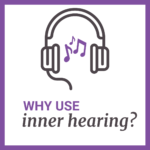
Inner Hearing — why audiation is key!
As musicians we should aim to be able to read music just as easily as we read a book. When we read books, we hear the words in our mind rather than speaking them aloud. Just as we can hear the written word in our heads, it is important to learn how to hear written […]
-
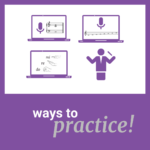
Intervals, semiquavers and practicing how to practice!
Check out some resources and content you might have missed around the DSMusic space recently. Resource Round-Up DSMusic’s top tips for practicing musicianship! Needing to “practice” is quite a catch-cry in the music learning space but sometimes it can be a little harder to model what that might look like for our students, as far […]
-
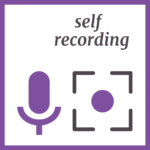
Why you should record yourself during music practice!
As a “performer” – even if you are only singing scales in the shower – you do not hear yourself the way others do. You may be too busy thinking about the Solfa names of the notes you are singing or the rhythm Deb asked you to clap as you sing that melody. Consequently, to […]
-

Ways to Actually PRACTICE your musicianship skills: DSMusic’s Top Tips
Here at DSMusic, we’re big on all things music language, sequential scaffolding and skill strengthening. Cracking into concepts and then taking learning all the way through to knowing. Needing to “practice” is quite a catch-cry in the music learning space but sometimes it can be a little harder to model what that might look like […]
-
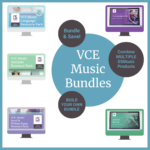
Practice tips, resource bundles & beating exam stress.
Check out some resources and content you might have missed around the DSMusic space recently. Resource Round-Up Get more of what you need from DSMusic for less! Announcing the launch of FIVE brand new BUNDLE options for VCE Music! Bundle together the DSMusic online courses for Analysis & Musicianship to get your interpretation as well […]
-
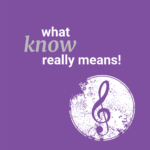
What Know Really Means: Strengthening Your Musicianship Skills
We learn things all the time, but learning is not knowing. Just because you can recall information for a test or parrot something back you’ve been told before, doesn’t mean you actually understand or really know these concepts. In musicianship – being truly musically literate – a key element of really knowing is what’s called […]
-
What should a Music Literacy Program contain to be TRULY GREAT?
The famous Hungarian composer, Zoltan Kodály, once said that to be a good musician we must have: 1. A well-trained ear.2. A well-trained intelligence.3. A well-trained heart.4. A well-trained hand. All four must develop together, in constant equilibrium. In today’s fast paced world, students (and often their parents) want to be able to “play the […]
-

Solfa, sailing & slow, mindful practice
Check out some resources and content you might have missed around the DSMusic space recently. Resource Round-Up It’s never too late to learn Solfa! Are you always stuck finding ways to get your students better at the musicianship stuff? The Music Language Online Course – Musicianship Module offers daily practice activities across a variety of concepts […]
-
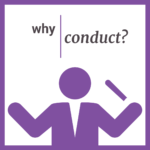
Why Conducting is Key!
Although the act of conducting typically applies to a person who directs a group of other musicians in a unified and expressively-intentional way, the patterns and movement can also be used to strengthen our own individual musical comprehension. This is because conducting is functional beat! That means you’re consciously aware of what rhythms you’re reading […]
-
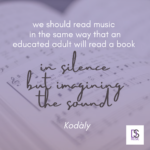
Top Tips for Linking Music Literacy with Music Learning in the Instrumental Lesson
My goal as a music teacher is to help students become musically literate in the same way as a language teacher helps their students become literate in the language they are being taught. But what does this mean? The Australian Curriculum document states that “Literacy” (referring to the English language) is the ability “to interpret […]
-
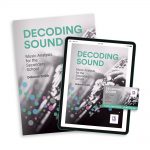
Teaching Music: Tips, Tools & Why We Do It
Check out some resources and content you might have missed around the DSMusic space recently. Resource Round-Up The Importance of Music Education Although all things music literacy and language of music are key here at DSMusic, we’re also big fans of terrific advocacy material. While we as music teachers and students understand the importance of […]
-
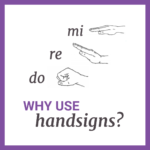
The what, how and why of handsigns
Why use handsigns? Each Solfa note (do, re, mi etc.) has a certain shape you make with your hand whenever you sing it – a handsign. As you sing the notes, you also move your hand up and down in a way that matches how the pitches are moving. It’s this approach that means you […]
-

How Eilish & Holst can help you Decode Sound!
Check out some resources and content you might have missed around the DSMusic space recently. Resource Round-Up Build Better Performers! DSMusic has everything you need to digitally decode character, comparison, tempo, articulation, tone colour and more! Decoding Sound: Analysis for the Secondary School is a fully interactive way for students to build word lists and […]
-
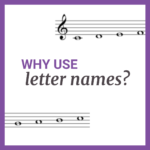
Let’s learn about letter names!
Music language is the method of human communication, either sung, played or written, consisting of the use of notes, in a structured and conventional way. If we’re thinking in terms of language, In music, letter notation can be a system used to represent pitches. In conventional Western note-naming, these are the letters A-G. These letter […]
-
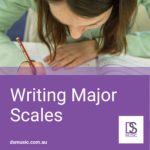
Intervals, Analysis and Access — Music Is Transformative
Check out some resources and content you might have missed around the DSMusic space recently. Resource Round-Up Seeking some Analysis Aid? Get yourself a step-by-step look at expressive outcome (feeling, character or mood), the elements of music (including the expressive ones!) and how all of this contributes to interpretation in performance. Plus, build your analysis […]
-

Why music literacy is as easy as do – re – mi!
What is Tonic Solfa? Tonic Solfa or Moveable do Solfa is a system of note naming in which every note within a scale is given a name based on its relationship to the other notes within that key. This is called tonic, functional or moveable do solfa as each name represents the function of that particular note (for example the […]
-
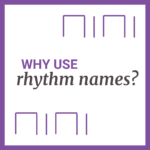
Sounding out rhythms = naming & knowing
Here at DSMusic, we’re big on the idea of really knowing concepts – understanding the what and why so you’re able to apply it to your music contexts in a practical way. Part of our approach to fostering musicianship skills – being musically literate, that is – involves rhythm names (you know, all that ta […]
-
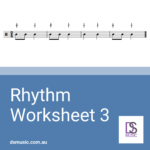
Canons, Creativity & Communities
Check out a few DSMusic free resources and a discover a round-up of our favourite finds this month.
-
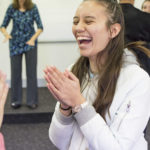
Memorisation & Music Learning
An important aspect of any musicianship, music literacy or music aural and music theory work we do is memorisation. This is where you memorise a specific concept or element (e.g. scales or chords etc.) or activity (e.g. a melody or rhythm etc). The obvious reason for doing this is so that the information is there, in your […]
-
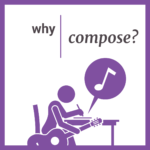
Why you should compose when practicing music literacy skills
Composition, just like performance, is a beneficial way to apply your music aural and music theory skills – what we call musicianship or music literacy – and to foster creativity. In the same way playing an instrument or singing gives you a chance to combine your practical technique, sound production and interpretation, composition is informed […]
-

Beethoven & Bingo
Check out a few DSMusic free resources and a discover a round-up of our favourite finds this month.
-
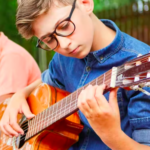
Practice, Performance Anxiety & Lifting Literacy
Plus dynamics, quaver rests, quotes and more – check out a few DSMusic free resources and a discover a round-up of our favourite finds this month.
-
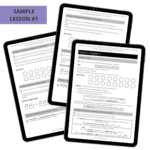
Melody, Models & a bit of Bill Bailey
Tackle tonality with Bill Bailey, check out a few DSMusic free resources and a discover a round-up of our favourite finds this month.
-

Major Scales, NAPLAN & Elgar
Check out some Level 1 Major Scale writing content, a few DSMusic videos and a round-up of our favourite finds this month.
-

Never miss out on DSMusic Updates!
News Feed Preferences on Facebook How to make sure you never miss out on any DS Music updates! I love what I do! Creating resources and content built upon sequential and rigorous music literacy and then, getting to share it with all of you. Sometimes I will churn out a bunch of exciting worksheets, videos […]

